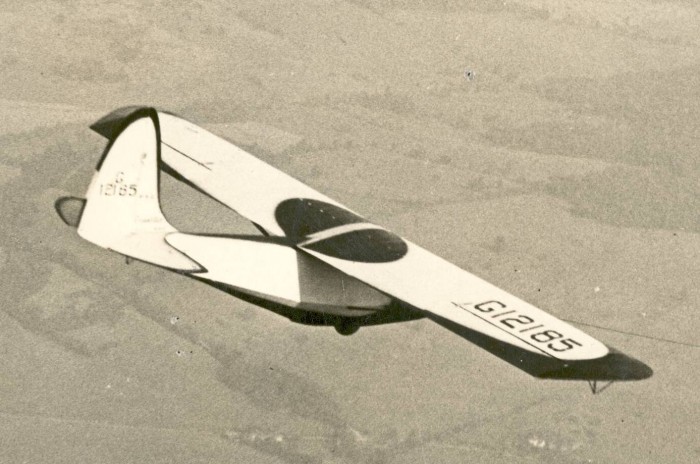Franklin PS-2
Glider Reg. Number: G12185
1930
Design & Development

The Franklin PS-2 is an American, high-wing, strut-braced, single seat, glider that was designed by R.E.Franklin and produced by the starting in 1930.
The prototype PS-2 was the 50-foot (15 m) wingspan Texaco Eaglet, flown in 1930. The production PS-2 had shorter 36 ft (11.0 m) wings.
The PS-2 is constructed with a steel tube fuselage and a wooden wing, all covered in doped aircraft fabric covering. The wings lack spoilers of other glide-path control devices and are supported by dual, parallel struts. The landing gear is a fixed mono wheel and a skid.
The prototype Eaglet performed a number of long tows, including one flown by Frank Hawks from California to Elmira, NY in 1930 and is now in the National Air and Space Museum.
In 1934, the PS-2 was the glider of choice for the Lustig Skytrain experiment. The concept was to tow three gliders in tandem, taking off from New York City and releasing one each over Philadelphia, Baltimore and Washington, D.C. The gliders were piloted by Jack O'Meara, PS-2 designer R.E. Franklin and Stan Smith. The Skytrain was intended to be a proof-of-concept for a future airline service, but was not pursued.
The PS-2 was also used in 1934 for a U.S.Navy primary flight training experiment in Pensacola, FL, designed by Ralph Barnaby.
The PS-2 was also flown by many early glider pilots including Richard duPont, Warren Eaton, Floyd Sweet and Stan Smith.
In 1983, two were reported as being still flown and one was under restoration by the designer's son, Chuck Franklin. The FAA had seven PS-2s registered in March 2011, including the Franklin-Stevens PS-2
Specifications
General characteristics
- Crew: one
- Wingspan: 36 ft 0 in (10.97 m)
- Wing area: 180 sq ft (17 m2)
- Aspect ratio: 7.2:1
- Empty weight: 220 lb (100 kg)
- Gross weight: 400 lb (181 kg)
Performance
- Maximum glide ratio: 15:1
- Rate of sink: 150 ft/min (0.76 m/s)
- Wing loading: 2.22 lb/sq ft (10.8 kg/m2)